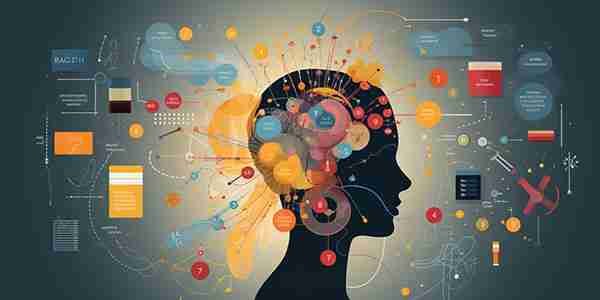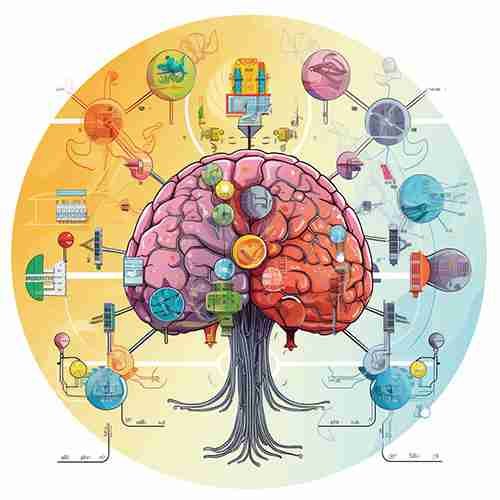Introduction
Motivation, the invisible driver of human behavior, is a complex and fascinating field of study. It is an internal force that activates, guides and maintains behavior toward achieving a particular goal. This article aims to uncover the intricate science behind motivation, primarily centered around neurotransmitters, hormones, and the brain’s pivotal role.
We will first introduce you to neurotransmitters like dopamine, norepinephrine, and serotonin, exploring their influence on motivation. Then, we will discuss hormones such as adrenaline, cortisol, testosterone, oxytocin, and vasopressin and their impact on our motivation levels. As we delve into their contributions to motivation, the spotlight will also be on the brain, particularly the hypothalamus, amygdala, hippocampus, nucleus accumbens, and prefrontal cortex. Furthermore, we will broach the psychology of motivation, motivation techniques, and the research surrounding it. Let’s embark on this journey to unravel the fascinating science of motivation.
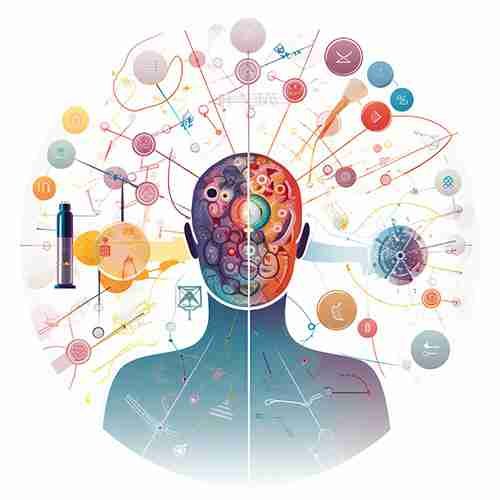
Neurotransmitters and Motivation
Neurotransmitters play a pivotal role in the complex neuroscience of motivation. These biochemical messengers transmit information across the neural network, linking the nervous system with the body’s muscles and organs. They profoundly impact our mood, emotions, and, significantly, our motivation levels. Dopamine, norepinephrine, and serotonin are the primary neurotransmitters influencing our drive to achieve goals and respond to rewards.
Dopamine, often called the “feel-good neurotransmitter,” is central to the science of motivation. When our brains perceive a reward, a burst of dopamine is released, leading to feelings of enjoyment and satisfaction. This dopamine response drives us to repeat the behavior that led to the reward. For instance, when we complete a challenging task at work or reach a personal fitness goal, dopamine is released, stimulating that sense of achievement and encouraging us to replicate these behaviors in the future.
Norepinephrine, another critical neurotransmitter, works with dopamine to influence motivation. When we face a challenging situation, norepinephrine levels increase, sharpening our focus, attention, and readiness to respond. This enhances our motivation to overcome the challenge. It is the driving force that prompts us to perform under pressure, whether meeting a tight deadline or competing in a sports event.
Serotonin, on the other hand, contributes to motivation by affecting our mood and social behaviors. A balanced level of serotonin is associated with feelings of well-being and happiness. When our serotonin levels are healthy, we are more likely to feel motivated to pursue our goals and engage in productive activities.
Several other neurotransmitters also contribute to motivation. For example, glutamate, the most abundant neurotransmitter in the brain, is involved in learning and memory, essential aspects of motivated behavior. GABA, the primary inhibitory neurotransmitter, helps control impulsiveness, a crucial factor in maintaining motivation over time.
Furthermore, the brain’s reward system intricately ties to neurotransmitters and motivation. Our brain’s reward system is activated when we engage in behavior that produces a positive outcome or reward. This system involves several neurotransmitter systems, including dopamine pathways, reinforcing the behavior and driving us to repeat it. This reward-based learning is a fundamental aspect of motivation, whether in striving to achieve personal goals or in the broader context of human survival and evolution.
In conclusion, neurotransmitters play a fundamental role in motivation, influencing how we respond to rewards, overcome challenges, and pursue our goals. Understanding the interplay between these biochemical messengers and motivation can provide vital insights into human behavior and potential strategies for enhancing motivation.
Hormones and Motivation
The science of motivation is closely tied to the intricate hormonal balance in our bodies. Hormones, the body’s chemical messengers, are critical in motivating our actions and behaviors. They are produced by different glands in the body and travel through the bloodstream to interact with receptors in various cells, triggering various physiological responses. Certain hormones like adrenalin, cortisol, testosterone, oxytocin, and vasopressin are paramount in the context of motivation.
Adrenalin, or epinephrine, is often called the “fight or flight” hormone. This hormone is released in response to stress or perceived danger, providing energy and focus to aid in immediate action. This can be seen as a form of motivation, driving individuals to confront or escape threats and challenges.
Cortisol, on the other hand, is a steroid hormone often associated with stress management. It helps regulate various body processes, including metabolism and immune response. However, high cortisol levels over prolonged periods can decrease motivation, fatigue, and depression. Maintaining a balanced cortisol level is crucial for maintaining motivation in the face of stressors.
Testosterone, although commonly associated with male sexual development, plays a significant role in both men and women regarding motivation. Higher testosterone levels have been linked to increased motivation, assertiveness, and competitiveness. Conversely, low testosterone levels can lead to lethargy and a lack of motivation.
Oxytocin, popularly known as the “love hormone,” plays a central role in social bonding, trust, and empathy. It can also increase motivation, particularly in social and collaborative contexts. Meanwhile, vasopressin, another hormone, works hand-in-hand with oxytocin to regulate social behavior and response to stress. It can influence motivation by promoting social interaction and cooperation.
Hormones exert a profound influence on our levels of motivation. They interact with our brain and body in a complex web of biochemical reactions, shaping our emotions, behaviors, and drives. A balanced hormonal state can foster motivation, resilience, and overall well-being, while hormonal imbalances can disrupt these processes. Understanding these hormonal influences on motivation provides crucial insights into the biological underpinnings of human behavior.

The Brain and Motivation
The brain is the central hub that processes and integrates information, critical in regulating motivation. Our brain’s ability to perceive, interpret, and respond to stimuli shapes our motivational drives. To understand how this happens, we will delve into specific regions of the brain: the hypothalamus, amygdala, hippocampus, nucleus accumbens, and prefrontal cortex, which are all integral to motivation.
The hypothalamus, located deep within the brain, plays a fundamental role in motivation. It is responsible for hunger, thirst, and other homeostatic systems, which can significantly impact our motivation levels. For instance, when we feel hungry, the hypothalamus sends signals prompting us to seek out food. It plays a substantial role in determining behavior related to rewards and pleasure, thus contributing to motivational processes.
Conversely, the amygdala plays a crucial role in processing emotions, which can directly influence motivation. It helps us interpret and respond to emotional stimuli, whether positive or negative. When we perceive a situation as threatening, the amygdala triggers a fear response that can motivate us to avoid danger. Conversely, when the amygdala interprets positive emotional stimuli, it can stimulate reward-seeking behaviors, thus enhancing motivation.
The hippocampus is another essential brain structure involved in motivation. It is primarily responsible for memory and learning. Our experiences and the memories we form from them can significantly influence our motivations. For instance, if we have a positive memory associated with a particular activity, the hippocampus can help motivate us to engage again.
The nucleus accumbens, often called the brain’s pleasure center, plays a significant role in reward and pleasure. It contains a high concentration of dopamine-releasing neurons, activated when we engage in pleasurable activities. This dopamine release motivates us to repeat these activities to experience the same pleasure, effectively reinforcing our behavior.
Lastly, the prefrontal cortex, located at the front of the brain, plays a critical role in decision-making, planning, and goal-directed behavior, making it integral to motivation. It helps us forecast the long-term consequences of our actions, which can significantly influence our motivation to pursue or avoid certain behaviors.
The brain’s role in motivation is multifaceted and accomplished through the interplay of various regions, each contributing to different aspects of motivational behavior. The brain is central to the mechanisms that drive motivation, from interpreting emotional stimuli to making reward decisions.
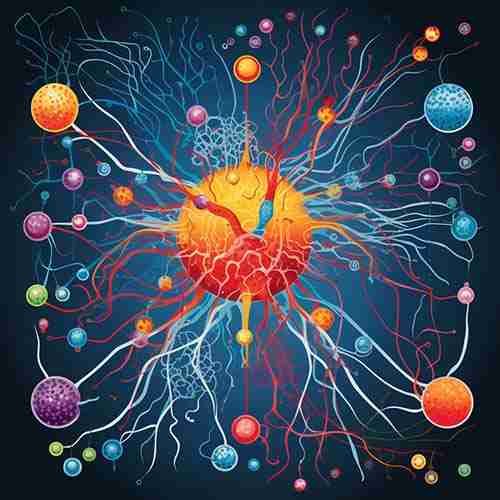
Motivation Psychology
Motivation psychology is a fascinating and multifaceted field that explores why we do what we do. It is based on the premise that our actions are driven by some form of motivation, whether conscious or unconscious, intrinsic or extrinsic. Motivation is the driving force that compels us to act and behave in specific ways, pursue our goals, and achieve success.
Understanding motivation psychology involves delving into various motivation theories. These theories provide a framework for understanding the diverse factors influencing our motivations. For instance, the “Drive Theory” suggests we are motivated to act due to biological needs. On the other hand, the “Incentive Theory” posits that we are motivated by the desire for rewards or the fear of punishment. “Self-Determination Theory” suggests that our innate psychological needs of autonomy, competence, and relatedness motivate us. Meanwhile, “Goal-Setting Theory” focuses on the impact of setting goals on our motivation levels.
In addition to theories, there are several factors, both internal and external, that influence our motivation. Internal factors include our physiological and psychological states, such as hunger, thirst, fear, or desire for achievement. External factors could be social, environmental, or cultural influences. For instance, positive reinforcement, societal expectations, or cultural norms can significantly shape our motivations.
Different types of motivation are recognized in psychology. Intrinsic motivation refers to doing something for pure enjoyment or personal satisfaction. It’s internally driven and often leads to high engagement and satisfaction levels. Extrinsic motivation, on the other hand, is driven by external rewards or punishments. It might include motivations like getting a good grade, promotion, or avoiding criticism.
Motivation psychology provides us with the tools to understand not just what motivates us, but also how a complex interplay of biological, psychological, and social influences shapes our motivations. It is a vital field that forms the backbone of our understanding of human behavior and motivation. Understanding the intricacies of motivation psychology can help us harness our motivators effectively towards achieving our goals, fostering personal growth, and enhancing our overall quality of life.

Motivation Techniques
Understanding and harnessing the framework of motivation is of enormous significance, not only to our achievements but also to our general well-being. Here, we delve into several techniques that, backed by scientific understanding, can help increase, boost, and maintain your motivation.
The first technique is to set clear, actionable goals. Research shows that having a specified, measurable, achievable, realistic, and time-bound (SMART) goal is highly effective in increasing motivation. This process creates a clear pathway for action and can enhance your motivation by providing a tangible aim. The brain’s reward system, particularly the release of dopamine, is activated when we set and work towards these goals. Furthermore, hormones such as adrenalin play a vital role in goal-setting motivation by providing the energy required to tackle the challenges ahead.
Interlaced with the concept of goal-setting is the necessity for personal interest and value alignment. Intrinsic motivation, where the reward comes from the activity itself, is often more powerful and lasting than extrinsic motivation, dependent on external rewards. By aligning goals with personal interests and values, one can promote the release of dopamine and serotonin, two neurotransmitters essential for maintaining long-term motivation.
Another essential technique is to develop a positive mindset. The role of neurotransmitters such as serotonin, which contributes to feelings of happiness and mood regulation, is critical here. Engaging in mood-boosting activities such as regular exercise or meditation can increase serotonin levels, thus fostering a positive mindset and aiding motivation. Moreover, maintaining a positive mindset can help manage stress hormones like cortisol, which can inhibit motivation when levels are too high.
The fourth technique is to foster social connections. Oxytocin, often called the “love hormone,” is released during positive social interactions and has been linked to increased motivation. Engaging regularly with supportive friends, family, or mentors can boost oxytocin levels, providing a natural motivation boost.
Lastly, understanding motivation cycles is vital. Motivation isn’t a constant state; it fluctuates over time. Recognizing this can help manage expectations and prevent disappointment when motivation levels drop. Implementing techniques such as regular breaks, adequate rest, and varying tasks can help manage these cycles and maintain motivation levels.
Understanding and implementing motivation techniques is a practical application of the science of motivation. By incorporating these scientifically-backed strategies into our daily lives, we can increase and maintain our motivation levels, enhancing our overall productivity and happiness. The interplay of neurotransmitters, hormones, and brain activity in motivation is a fascinating and practical subject that can help us lead more focused and fulfilling lives.
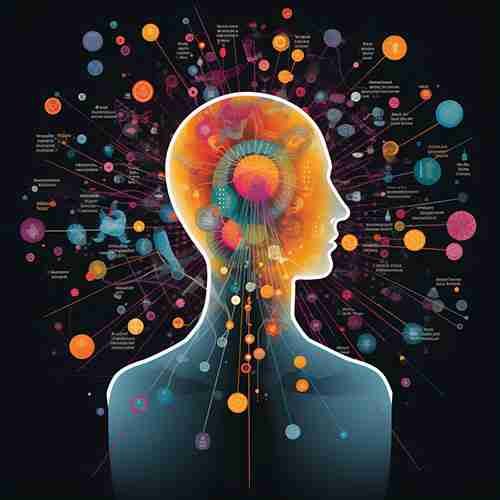
Motivation Research
Motivation research is an expansive and intricate field that seeks to understand why and how we are driven to act the way we do. It attempts to dissect the psychological, biological, and social factors that drive human behavior. The methods used in motivation research vary widely and can range from detailed observational studies to expansive surveys and comprehensive psychological tests. The aim is to unearth the functional and structural underpinnings of motivation in the brain and to understand the intricate interplay of biochemical substances such as neurotransmitters and hormones.
One typical method used in motivation research is neuroimaging. This technique allows researchers to observe brain activity and identify certain activated regions during motivated behavior. For instance, functional MRI (fMRI) scans can show which parts of the brain light up when a person performs a task they find motivating. This research can help us understand how different brain areas communicate and interact to drive our behavior.
Moreover, the results of motivation research are as varied as the methods used. Without a doubt, it has been found that neurotransmitters, hormones, and the brain all contribute to our motivation. It has been discovered that dopamine, a neurotransmitter, plays a significant role in the reward system, which is central to motivation. Hormones like adrenaline, cortisol, and oxytocin, also play crucial roles in modulating motivation.
However, despite these significant findings, motivation research has limitations. One of the biggest challenges is the overlap of motivational systems and other cognitive functions. It’s often difficult to isolate motivation from other aspects like emotion, learning, and memory since these processes often interact and overlap.
Additionally, there’s the issue of individual differences. Motivation can differ significantly from person to person due to genetics, upbringing, and personal experiences. This adds another layer of complexity to motivation research, as it’s challenging to draw definitive conclusions that apply broadly to all individuals.
Despite these inherent challenges, motivation research provides valuable insights into why we behave as we do. Understanding motivation’s biological and psychological underpinnings can be crucial in education, workplace productivity, and mental health. As our knowledge of the human brain and its biochemistry continues to expand, so will our understanding of the intricate machinery that drives our motivations.
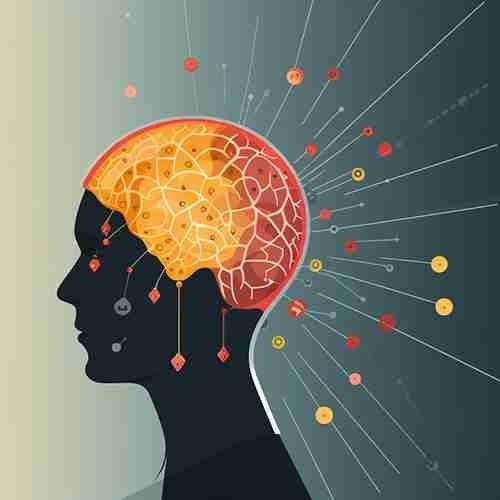
Motivation psychology is an intriguing field of study investigating why we do what we do, what drives our actions, and how our internal and external environments influence our motivations. It seeks to unearth the cognitive, biological, social, and emotional factors that stimulate our desire and energy to be interested continually and committed to a job, role, or goal or to try to attain a goal. This discipline is part of a larger realm, namely psychology. Still, it is distinctive given its pivotal focus on understanding and explaining human behavior and experiences from a motivational standpoint.
One of the most significant components of motivation psychology is motivation research, which employs various methods to explore the causes and effects of motivation. These methods range from controlled laboratory experiments to observational studies, surveys, and case studies. The results of motivation research have been instrumental in various fields, including education, business, healthcare, and sports, paving the way for effective techniques to boost motivation and productivity.
Theories related to motivation abound in the field of psychology, each offering a different perspective on what drives our behavior. Some widely recognized theories include Maslow’s Hierarchy of Needs, which posits that we are motivated by our unsatisfied needs, and the Drive Theory, which suggests our biological needs drive us. The Expectancy theory posits that our behavior is determined by how much we want something and how likely we are to get it.
Motivation psychology also delves into the factors that influence motivation. These include biological factors such as hunger or sleep, social factors like peer pressure or societal expectations, and psychological factors such as self-perception, beliefs, and values. The complex interplay of these factors determines our motivation at any given moment.
Also, within the framework of motivation psychology, different types of motivation are recognized and studied. Extrinsic motivation, for instance, refers to when we are motivated to perform a behavior or engage in an activity to earn a reward or avoid punishment. On the other hand, intrinsic motivation refers to doing something because it is inherently interesting or enjoyable. Another type of motivation, achievement motivation, drives people to overcome challenges, compete, or meet high standards of excellence.
Understanding motivation psychology, therefore, allows us to appreciate the complexity of what drives us, why we make the choices we do, and how we can channel our motivations effectively to reach our goals. The study of motivation is a powerful tool that helps us understand ourselves and others and apply practical strategies in various aspects of our lives.
Final Thoughts
Neurotransmitters, hormones, and the brain are paramount in the dynamic motivation process. The intricate network of chemical messengers and brain structures, harmoniously working together, enable us to set goals, strive for achievement, and respond to rewards and challenges. Therefore, understanding their functions can provide an in-depth insight into the complex tapestry of our motivational behaviors.
Neurotransmitters, such as dopamine, norepinephrine, serotonin, and others, play a pivotal role in our motivation. Dopamine, aptly termed the ‘feel-good hormone,’ is integral in the brain’s reward system, driving us toward pleasurable experiences and goal-oriented behaviors. Norepinephrine and serotonin also influence motivation by modulating our attention, mood, and responses to stress. These neurotransmitters and others establish a delicate balance that underpins our motivation, making it a multidimensional process.
Similarly, hormones like adrenalin, cortisol, testosterone, oxytocin, and vasopressin are also crucial to our motivation. For instance, adrenalin and cortisol impact our motivation by triggering our fight-or-flight response. At the same time, testosterone can enhance competitive behaviors, and oxytocin and vasopressin can motivate social bonding and trust. Understanding the role of these hormones in motivation can help us harness our motivations more effectively and manage potential obstacles.
The brain, as the central hub, orchestrates the entire motivational process. Key areas such as the hypothalamus, amygdala, hippocampus, nucleus accumbens, and prefrontal cortex contribute uniquely to motivation. From the primary drive for survival mediated by the hypothalamus to the processing of reward and decision-making by the prefrontal cortex, the brain’s role in motivation is multifaceted and profound.
In conjunction with these biological factors, motivation psychology also plays a significant role in understanding motivation. We can understand the external and internal factors that fuel our motivation through theories such as Maslow’s hierarchy of needs or Herzberg’s two-factor theory. Although methodologically diverse and complex, motivation research continues to shed light on the mechanisms and practical techniques to boost motivation, further enriching our understanding of this critical human phenomenon.
To sum up, the interplay of neurotransmitters, hormones, and the brain in motivation is an intricate and dynamic process. Comprehending their roles can significantly aid in developing strategies to stay motivated, increase motivation, and understand what fuels or hinders us. Far from being a simple one-dimensional concept, motivation is a complex and vital process that keeps us moving toward our goals and enriches our lives.

